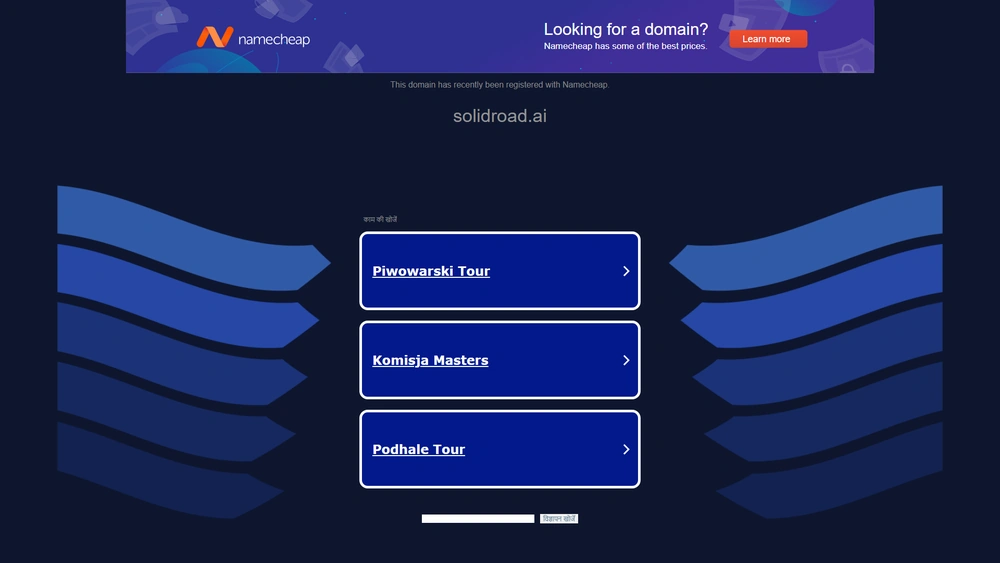Solidroad Overview & 2025 Industry Position
In a competitive landscape driven by rapid digital acceleration, Solidroad has emerged as a forward-thinking platform designed for planning, alignment, and results-focused execution. Known for bridging the gap between team strategy and actual outcomes, Solidroad offers an operational planning environment where teams can set, track, and deliver on collective goals—without losing velocity across functions. As of July 2025, the brand is positioned as a top-tier alternative to older strategy software and excels in usage by startups, scale-ups, and agile enterprise teams looking to move swiftly while staying aligned. Solidroad’s traction stems from simplifying quarterly and annual planning, automating progress tracking, and replacing messy slide decks or disconnected tools with one central system of strategic truth.
From Launch to 2025 Journey
Solidroad was founded in late 2020 during a period of remote scaling challenges that illuminated the inefficiencies of traditional goal-setting tools. In mid-2021, it launched its beta with a focus on OKRs tailored for SaaS and product-led teams. By early 2022, Solidroad introduced integrations with tools like Slack, Jira, and Notion, marking a shift from static planning to continuous alignment. In 2023, the platform pivoted toward workflows that supported live check-ins and executive dashboards. Major funding rounds in 2024 fueled its expansion into Europe and Asia-Pacific. As of Q2 2025, Solidroad supports 4,500+ teams and a growing ecosystem of integration partners. Its 2025 thesis: “Enable velocity by aligning vision with visibility through every layer of modern execution.”

Solidroad Key Features
Solidroad’s strength lies in its ability to clarify team-level strategy and simplify plan-to-performance mapping. Its design supports cross-functional clarity while meeting executive visibility standards. Core features include:
- Customizable Planning Cadences: Quarterly, semester-based, or rolling plans aligned at the team or organizational level.
- OKR Automation: Clean interface for objectives, key results, and weekly syncs.
- Live Alignment Map: Visualizes how team projects roll into company-level goals.
- Notion & Slack Integration: Live embeds and weekly nudges for goal updates.
- Strategic Channels: Structured conversation around progress, risks, and dependencies.
Workflow & UX
Solidroad’s interface is purpose-built for non-technical and cross-team usage. Onboarding is bite-sized and intuitive, with AI-powered onboarding guides predicting the cadence and flow of your org’s decision-making style. The weekly planning view lets users zoom in and out—effortlessly toggling between strategic themes and execution blocks. Live editing makes shared workflows feel deliberate and coordinated.
Pro Tip: Use team-specific “Roads” to separate outcomes between Sales, Product, and Ops—accelerating multi-org planning precision without extra bloat.
Solidroad Pricing Analysis & Value Metrics
As of July 2025, Solidroad’s pricing reflects competitive flexibility for orgs of various sizes. All tiers include strategy cycles, unlimited objectives, and Jira integration by default.
| Plan | Monthly (Billed Annually) | Key Features |
|---|---|---|
| Starter | $79 | Up to 10 users, 1 workspace, basic integrations, dashboard view |
| Growth | $199 | Up to 50 users, advanced alignments, Slack/Notion links |
| Team Plus | $499 | Unlimited users, strategic channels, analytics suite |
| Enterprise | Custom | Dedicated CSM, SOC2/GDPR, SSO, roadmap support |
Value takeaway: Mid-market orgs (50–200 seats) get the strongest ROI, thanks to layered visibility and reduced tool fragmentation across planning and ops.
Competitive Landscape
Several tools aim to normalize strategy coordination, yet Solidroad carves a niche by automating alignment instead of merely tracking it.
| Competitor | Differentiator | Ideal User |
|---|---|---|
| WorkBoard | Heavier on Enterprise OKRs | Large ops orgs |
| Lattice | More performance focused | HR + People teams |
| Asana Goals | Connected to task/project UX | Project management-centric firms |
| Solidroad Teams | Built for horizontal-aligned planning | SaaS scale-ups, Strategy PMs |
Real-World Use Cases
Solidroad powers quarterly execution for:
- Series B+/C tech companies scaling international product lines
- Hybrid orgs replacing spreadsheets with interactive OKRs
- Executive teams managing goal-setting, check-ins, and demos in one loop
- Agile departments within traditional enterprises seeking visibility
Solidroad Integrations
Solidroad makes setup easy with native and third-party integrations:
- Slack – update nudges, progress alerts
- Notion – embed roadmaps
- Jira – bi-directional syncing of epics to results
- Zapier – intermediates for 1,000+ tools
- Google Workspace – docs, slides, calendar blocks
Pros & Cons
- Pros:
- Deep alignment visibility across teams
- Lightweight onboarding experience
- Powerful integrations including bi-directional syncing
- Great for Series B and onward ops planning
- Cons:
- Mobile support still limited on Android
- Less suited for tactical task tracking
- Pricing jumps steeply from Growth to Team Plus
Final Thoughts
For strategy-focused founders, COOs, and heads-of-ops, Solidroad delivers structure without rigidity. It won’t replace a project manager, but it will prevent your team from scaling process debt. Firms with 15–250 employees will feel the most ROI, particularly as Solidroad grows into a command center for quarterly agility in 2025.
Solidroad FAQ
Yes, multiple team workspaces can be managed from a single account, allowing unified planning across departments.
Yes, Solidroad offers a 14-day free trial with access to all Growth-tier features.
Jira syncs in near real-time with API polling, while Notion embeds refresh dynamically based on page activity.
Yes, SAML-based SSO and SOC2 compliance are included in the Enterprise plan.
Yes, CSV upload is available for bulk OKR setup and historical goal imports.